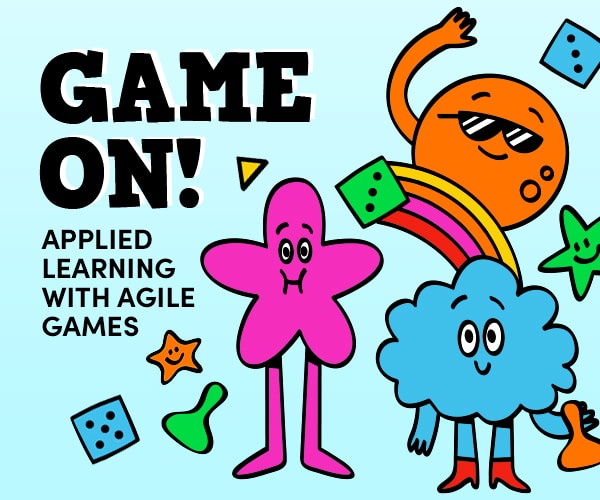A simple, interactive, and collaborative game to experience at a high level the ceremonies and common practices of Scrum through simulating a sprint.
This game has been used as one part of a longer session focused on learning about Scrum. Prior to playing this game, the team had read the Scrum Guide, been given an overview of Scrum methodology, and been exposed through various other activities to the Scrum roles and Scrum ceremonies. This game is used to experiment with how to put what they’ve learned into practice!
Timing: 30 – 45 minutes
Materials
A public Trello board with column headers pre-defined – “Backlog”, “Sprint Plan/ To-Do”, “In Progress”, “Done”
Note: You could instead use a wall to create a physical board in the room and the team can populate with sticky notes if all participants are in-person and if you prefer this approach to a digital board.
Instructions
- Have the team decide who will play each of the Scrum roles for the game – Product Owner, Scrum Master, Delivery Team, Stakeholder/s
- Backlog Refinement
- The goal is for everyone to work together to quickly create a backlog
- The facilitator asks – What are the potential user stories for someone who needs to get themselves ready for work in the morning?
- These items get added as cards in the “Backlog” on the Trello
- The team asked to size each item (S, M, L or Fibonacci) and add that to the card as well
- Sprint Planning
- Identify the Sprint Goal: Work from home day
- Have the team pull in the stories that would meet that sprint goal into their “Sprint Plan/ To-Do” on the Trello
- Sprint
The team assigns themselves to items, acts out the items they assign to themselves (like charades), and moves the cards across the board - Sprint Review
- Product Owner shares an overview of what the team has completed to the Stakeholder/s
- The team has the option to demo what they’ve done
- Sprint Retrospective
The team, SM & PO all brainstorm a couple of things that went well & what they want to do differently next time - Sprint Planning
- Identify the Sprint 2 Goal: Go to the office for work & have an important presentation
- Have the team pull in the stories that would meet that sprint goal into their “Sprint Plan/ To-Do” on the Trello
- Debrief
Learning Points
- Which parts were easy/ hard to remember from what we learned prior to the game?
- What came to you easily? What did you find difficult?
- How did the sprint goal help focus the team & impact what stories get pulled into the sprint?
- How will this relate to our day-to-day?
- What is something you’ll remember and apply in the future?






